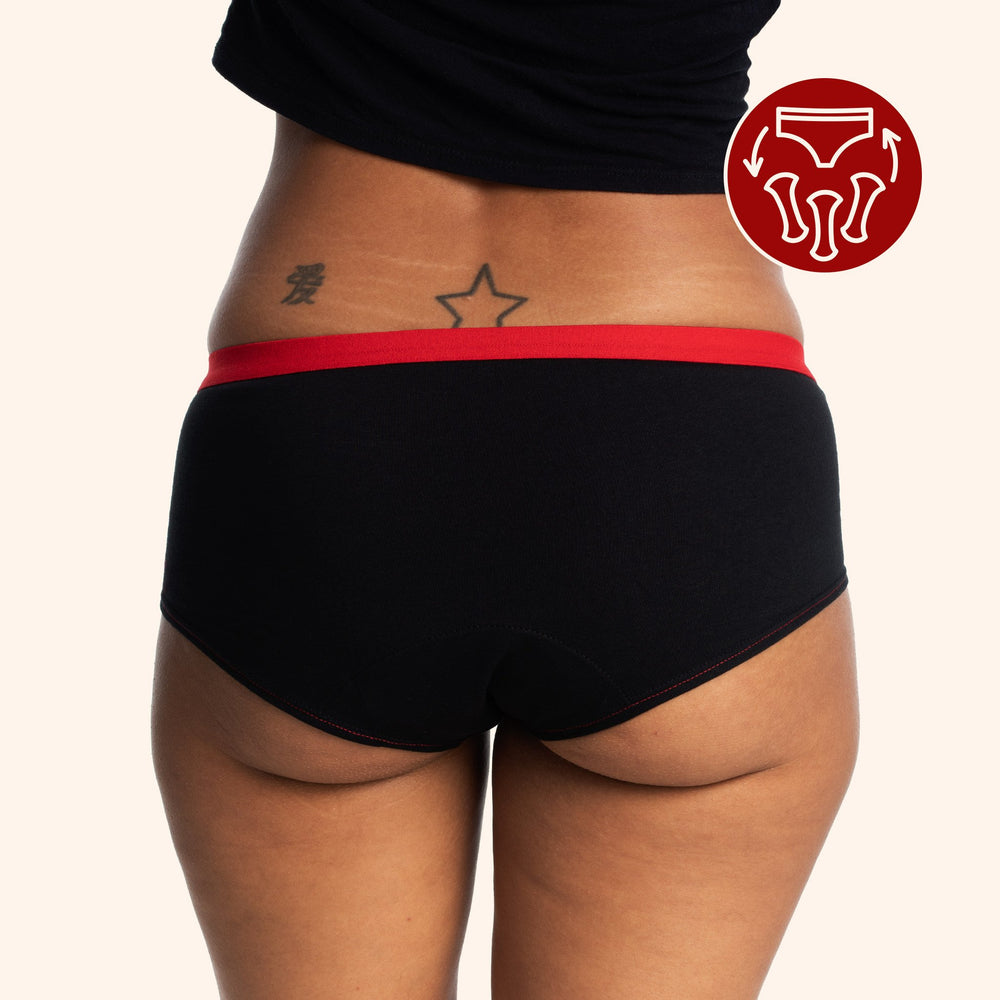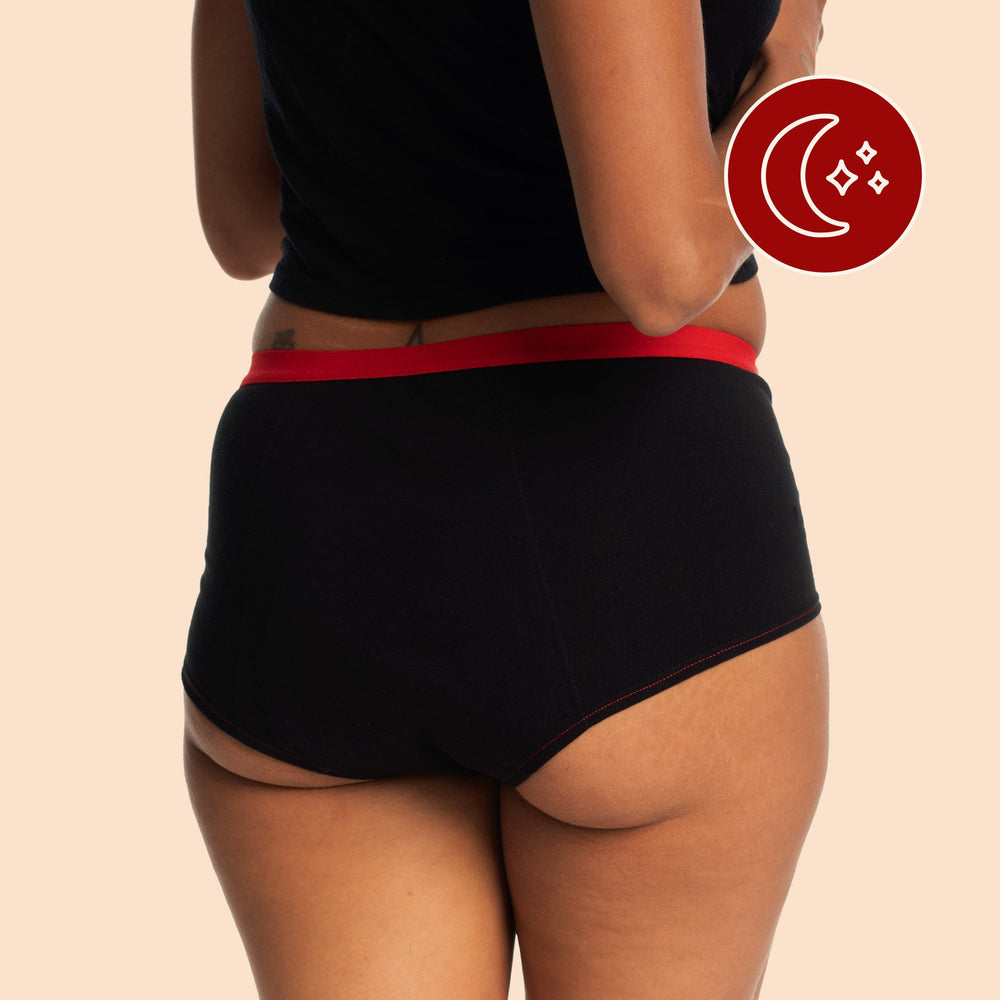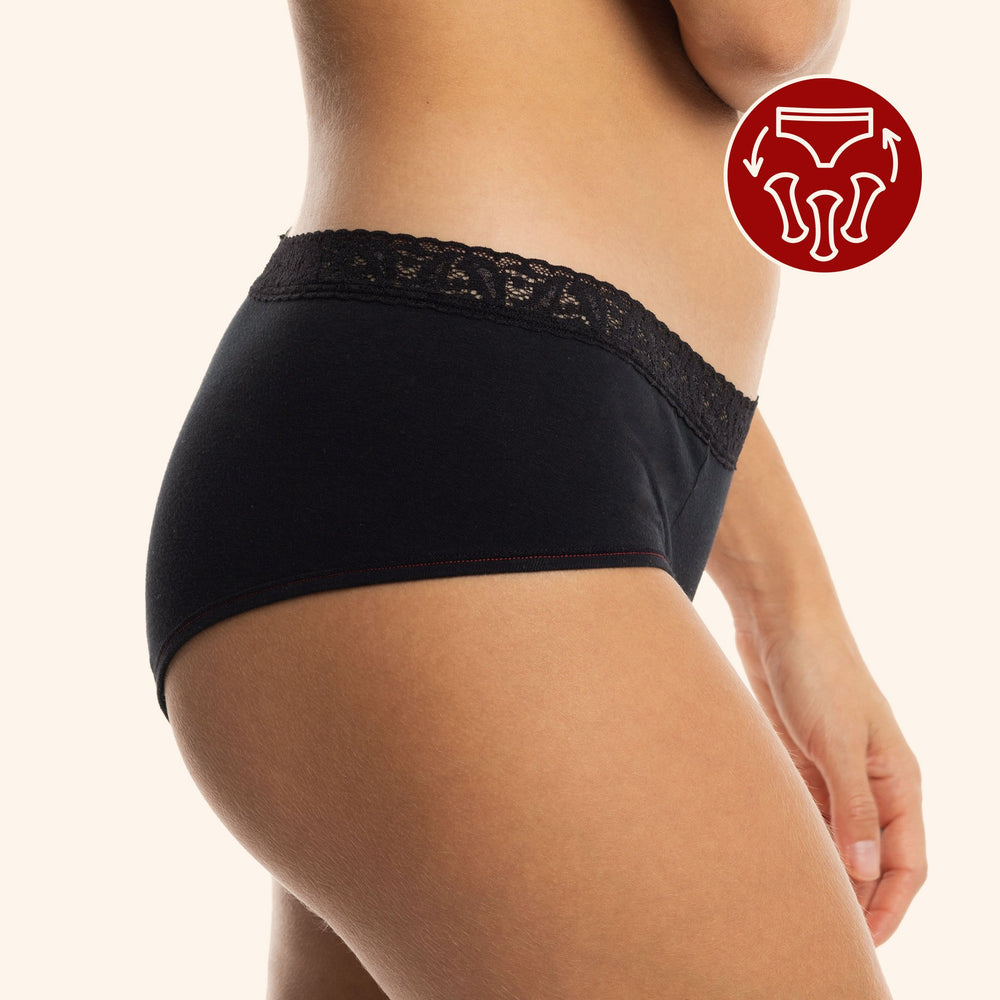
Tampon. Without one we panic. When taken by surprise, its name is whispered into our sister's ear. Then we slide it discreetly into our back pocket. Over time, we’ve developed a toxic relationship (both literally and figuratively!) with tampons.
A kind of love-hate dynamic that we now rely on. We use it in the absence of a better solution. A bit like that old fling that we hang on to, while knowing deep down that somewhere else there is something better waiting for us ... like our Mme L'Ovary panties. In short. For years, the tampon has dominated the list of women's menstrual products.
It's small, it's simple, seemingly harmless, has virtually no odour, and allows us to conceal our monthly experience. But where did it come from? What's the history of the tampon?
We will tell you about it in this article! Once upon a time: the tampon.

CHAPTER 1: THE MANY GRANDMOTHERS OF THE LITTLE TAMPON
Throughout history and around the world, women have put some astonishing objects into their vaginas to tend to their monthly cycle. Here are a few:
- The Egyptians: softened papyrus plant
- The Greeks: pieces of wood wrapped in string.
- The Romans: cotton—a slightly less destructive ingredient for vaginal walls ...
- The Japanese: paper
- Indonesians: vegetable fibres
- Central Africans: rolls of grass!
(You could say that, over the years, we've had an overflow of ideas!) This creativity for managing a woman's flow was stopped in the Middle Ages when the clergy forbade women to put anything inside their vaginas (besides a penis for reproductive purposes ... of course). At that time, women didn’t use anything. Nada.
As underwear didn’t exist yet, they wore long skirts and left their menstruation flow free. Long Live freedom! However, this kind of menstrual flow without borders raised some menstrual questions. It was at this point that women began to use cotton disposable pads placed around the hips that they rinsed and dried.
These have evolved and taken many forms over the years. But back to our tampons!

Here are other examples of "menstrual" inventions of the time
In 1879, the British Medical Journal published a report on advanced technology to manage menstrual flow.
Here's how it worked: three or four cotton balls were attached along a string. This was inserted with a wooden rod, through a glass tube in the vagina. A disturbing, dangerous, and complex process. Fortunately, this “technology” didn't stick around for long.

CHAPTER 2: WHO INVENTED THE MODERN TAMPON?
It was in 1929, in the United States, when a woman entrusted her friend to insert a sponge in her vagina to absorb her menstrual flow, that Dr. Cleveland Haas had the idea of inventing the “modern tampon.” As his wife worked as a ballerina, he was familiar with the trouble she had dancing with bulky pads in her crotch during her period.
Convinced of the importance of such an invention, he created the first version of the tampon: compressed cotton combined with a telescopic applicator. He marketed this little marvel in 1934, and the company Tampax was born.

But this invention—which seemed to liberate women from the hassles caused by their periods—didn’t convince everyone of their worth. Especially not the priests! It should be noted that, at that time, from the top of their Sunday pulpit or in the whispering shadow of the confessional, church representatives had a major influence over public opinion.
It was in large part religion that controlled politics, education, economy, wars, and citizens’ sexuality. Why not ladies’ vaginas, while they were at it. The clergy feared, among other things, that the tampon might damage the female hymen or even worse, that these phallic sponges could be impurely used as an instrument of pleasure! No wonder, as this was a time when, with every orgasm, a woman was one step closer to the gates of hell!
It was a time when sexuality, pleasure, and joy were prohibited, where the feminine anatomy, its fluids as well as the menstrual cycle were drowned in ignorance, shame, and taboos. A number of threats were thrown at those who dared to use it. But it took a lot more to stop women from using these instruments of freedom.

The applicator is invented to prevent women from “giving themselves pleasure” while inserting a tampon... mmmm... yes. Signed, “The Catholic Religion.”
CHAPTER 4: THEN CAME THE WORLD'S SUPER-HYPER ABSORBENT TAMPON!
Then, in 1975, Rely tampons came out on the shelves. This mastodon of feminine hygiene products was 5 centimeters in diameter and 13 centimeters in length, the size of a large zucchini! Ouch. It was seen as the menstrual object of the future due to its amazing absorbency. So absorbent that women kept it in throughout their entire period, even though some had to consult a doctor to remove it!
Of course, all this caused many health problems and even the death of a number of women. In 1980, little by little, doctors established the connection between using the Rely tampon and the 815 cases of Toxic Shock Syndrome, of which 38 were fatal.
A number that increased to 2,200 by 1983. So Rely was taken off the shelves.

EPILOGUE
Since the Rely episode, many scandals have shaped the appearance and composition of the tampons that we know today. To date, the safety of these products has not yet been proven. The rest of the tampon's history is ours to write!
We all have a major role to play in it, thanks to our choices and our purchasing power! Who knows, maybe someday we can get out of this toxic relationship and be able to experience a period without risking our health!
To learn more about the harmfulness of the tampon, follow our article, “The tampon: our intimate enemy.”























